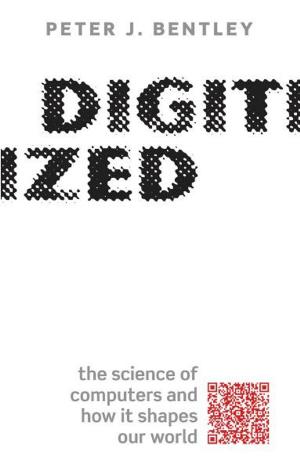Ancient Prophecy
Near Eastern, Biblical, and Greek Perspectives
Nonfiction, Religion & Spirituality, Bible & Bible Studies, Old Testament, Criticism & Interpretation| Author: | Martti Nissinen | ISBN: | 9780192535986 |
| Publisher: | OUP Oxford | Publication: | November 28, 2017 |
| Imprint: | OUP Oxford | Language: | English |
| Author: | Martti Nissinen |
| ISBN: | 9780192535986 |
| Publisher: | OUP Oxford |
| Publication: | November 28, 2017 |
| Imprint: | OUP Oxford |
| Language: | English |
This is an open access title available under the terms of a CC BY-NC-ND 4.0 International licence. It is free to read at Oxford Scholarship Online and offered as a free PDF download from OUP and selected open access locations. Ancient Prophecy: Near Eastern, Biblical, and Greek Perspectives is the first monograph-length comparative study on prophetic divination in ancient Near Eastern, biblical, and Greek sources. Prophecy is one of the ways humans have believed to become conversant with what is believed to be superhuman knowledge. The prophetic process of communication involves the prophet, her/his audience, and the deity from whom the message allegedly comes from. Martti Nissinen introduces a wealth of ancient sources documenting the prophetic phenomenon around the ancient Eastern Mediterranean, whether cuneiform tablets from Mesopotamia, the Hebrew Bible, Greek inscriptions, or ancient historians. Nissinen provides an up-to-date presentation of textual sources, the number of which has increased substantially in recent times. In addition, the study includes four analytical comparative chapters. The first demonstrates the altered state of consciousness to be one of the central characteristics of the prophets' public behavior. The second discusses the prophets' affiliation with temples, which are the typical venues of the prophetic performance. The third delves into the relationship between prophets and kings, which can be both critical and supportive. The fourth shows gender-inclusiveness to be one of the peculiar features of the prophetic agency, which could be executed by women, men, and genderless persons as well. The ways prophetic divination manifests itself in ancient sources depend not only on the socio-religious position of the prophets in a given society, but also on the genre and purpose of the sources. Nissinen contends that, even though the view of the ancient prophetic landscape is restricted by the fragmentary and secondary nature of the sources, it is possible to reconstruct essential features of prophetic divination at the socio-religious roots of the Western civilization.
This is an open access title available under the terms of a CC BY-NC-ND 4.0 International licence. It is free to read at Oxford Scholarship Online and offered as a free PDF download from OUP and selected open access locations. Ancient Prophecy: Near Eastern, Biblical, and Greek Perspectives is the first monograph-length comparative study on prophetic divination in ancient Near Eastern, biblical, and Greek sources. Prophecy is one of the ways humans have believed to become conversant with what is believed to be superhuman knowledge. The prophetic process of communication involves the prophet, her/his audience, and the deity from whom the message allegedly comes from. Martti Nissinen introduces a wealth of ancient sources documenting the prophetic phenomenon around the ancient Eastern Mediterranean, whether cuneiform tablets from Mesopotamia, the Hebrew Bible, Greek inscriptions, or ancient historians. Nissinen provides an up-to-date presentation of textual sources, the number of which has increased substantially in recent times. In addition, the study includes four analytical comparative chapters. The first demonstrates the altered state of consciousness to be one of the central characteristics of the prophets' public behavior. The second discusses the prophets' affiliation with temples, which are the typical venues of the prophetic performance. The third delves into the relationship between prophets and kings, which can be both critical and supportive. The fourth shows gender-inclusiveness to be one of the peculiar features of the prophetic agency, which could be executed by women, men, and genderless persons as well. The ways prophetic divination manifests itself in ancient sources depend not only on the socio-religious position of the prophets in a given society, but also on the genre and purpose of the sources. Nissinen contends that, even though the view of the ancient prophetic landscape is restricted by the fragmentary and secondary nature of the sources, it is possible to reconstruct essential features of prophetic divination at the socio-religious roots of the Western civilization.















